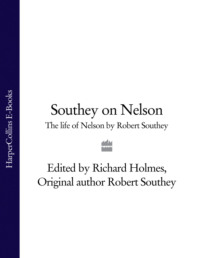
Полная версия
Tommy: The British Soldier on the Western Front
Landscape stirred more than history. Once, when 2/Royal Welch Fusiliers were on the march:
There were few men within range of seeing who did not look wistfully at a wayside house of red brick and tiles, built to an English design, and set in an English garden …27
Men easily found familiar comparisons. The old hospital in Corbie was ‘something on the lines of St Cross in Winchester’, the stream running through Lumbres would make ‘an ideal trout stream, if only it was properly cared for’. Scottish infantry sitting about their billets in St-Omer made it seem like a Lanarkshire town, and Aubers Ridge looked just like the Hog’s Back between Guildford and Farnham.28 The villages on the Somme were ‘each … as big as Cholsey, reckoning from the church to half way to the asylum’. Second Lieutenant H. M. Stanford, Royal Field Artillery, told his parents that the Flanders countryside ‘is very flat and full of dykes and canals but one can see fairly high hills out to the E. and N.E., otherwise it might be part of the marshes at home for the most part’. In the trenches, however, ‘the mud becomes worse than the Aldeburgh River, and that’s saying a great deal’.29 John Masefield, on the Somme as a correspondent in 1916, described the Ancre running down the western edge of the battlefield, ‘beneath great spurs of chalk, as the Thames runs at Goring and Pangbourne’.30
Most combatants wondered if the blighted landscape could ever be restored. ‘We used to say that it would never be reclaimed,’ wrote Henry Williamson,
that in fifty years it would still be the same dreadful morass … It was said that this land … would not be cleared up for 100 years. But after the armistice Russian labourers came over in thousands, also Italians. I saw them digging with long-handled shovels, first collecting great dumps of wire and yellow unexploded shells. Rifles stood on thinning bayonets in places all over the battlefield in 1924, marking where wounded men had fallen. Dugouts were beginning to cave in.31
In some places, like the zones rouges at Verdun, the land was simply cloaked in pine trees after the war and left to the patient hand of nature. Some villages were so comprehensively destroyed that they were no longer worth rebuilding in a post-war France whose manpower losses had reduced pressure on the land.
When President Poincaré gave Verdun its Cross of the Légion d’Honneur he prophesied that ‘this ravaged countryside will recover the laughing face that it wore in happy times’, but the years have proved him wrong.32 The villages of Douaumont, Fleury, Vaux, Bezonvaux, Louvemont, Ornes, Haumont, Beaumont and Cumèries were never rebuilt. Small wonder that the female figure in Rodin’s bronze La Défense, sited symbolically outside Verdun’s Porte St-Paul, is ‘screaming in grief and anger at the sky’.33 But elsewhere his optimism has been justified, as John Masefield prophesied while the war was still in progress.
When the trenches are filled in, and the plough has gone over them, the ground will not long keep the look of war. One summer with its flowers will cover most of the ruin that man can make, and then these places … will be hard indeed to trace, even with maps … In a few years time, when this war is a romance in memory, the soldier looking for his battlefield will find his marks gone. Centre Way, Peel Trench, Munster Alley and these other paths to glory will be deep under the corn, and gleaners will sing at Dead Mule Corner.34
Major General Sir Ernest Swinton thought that Masefield was right. In Twenty Years After he wrote that:
Time has worked its changes. The battle-fields today are green and gold again. Young trees are everywhere and the desolate waste of shell-hole and mud has given way to pasture-land and waving corn. Proudly on the heights stand the memorials to the fallen, and in the valleys and on hillside peacefully lie the silent cities where they rest.35
Конец ознакомительного фрагмента.
Текст предоставлен ООО «ЛитРес».
Прочитайте эту книгу целиком, купив полную легальную версию на ЛитРес.
Безопасно оплатить книгу можно банковской картой Visa, MasterCard, Maestro, со счета мобильного телефона, с платежного терминала, в салоне МТС или Связной, через PayPal, WebMoney, Яндекс.Деньги, QIWI Кошелек, бонусными картами или другим удобным Вам способом.











